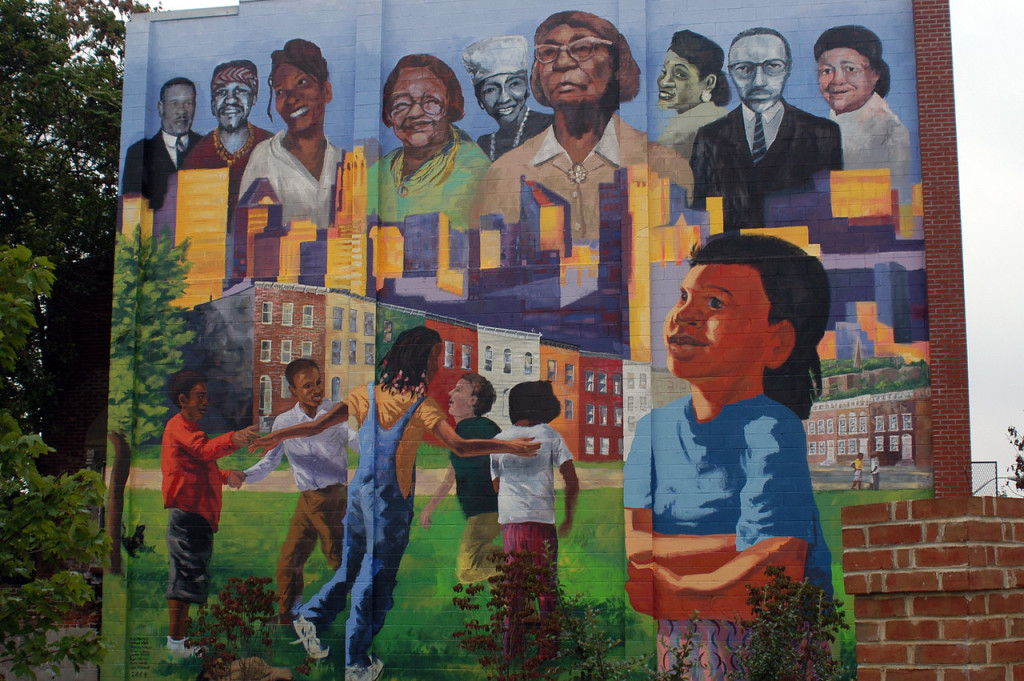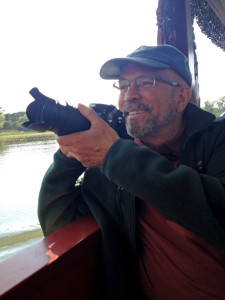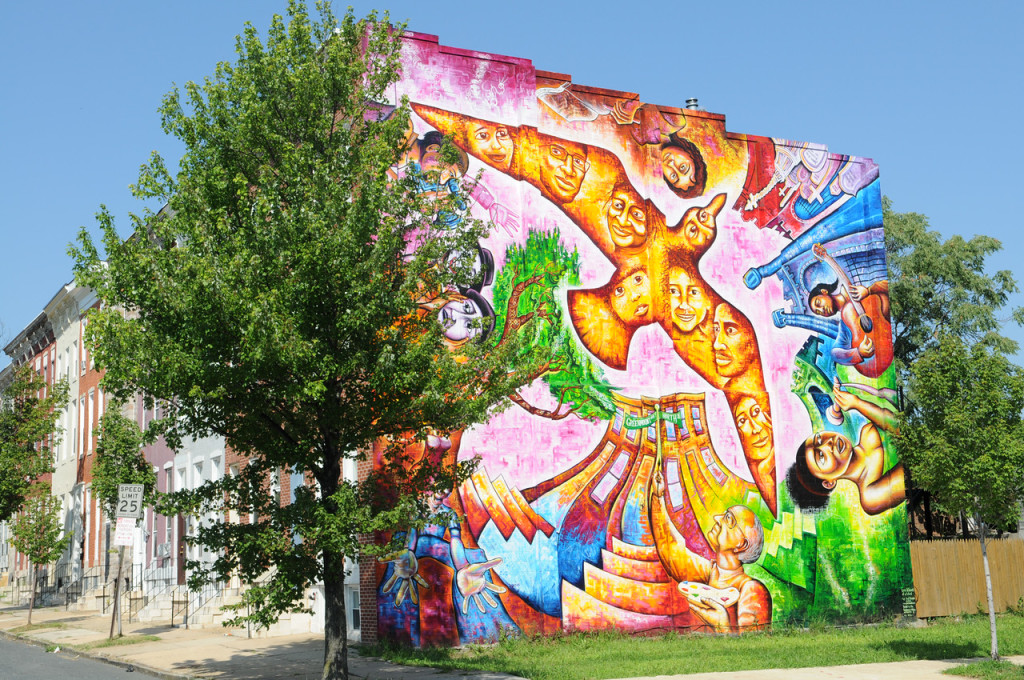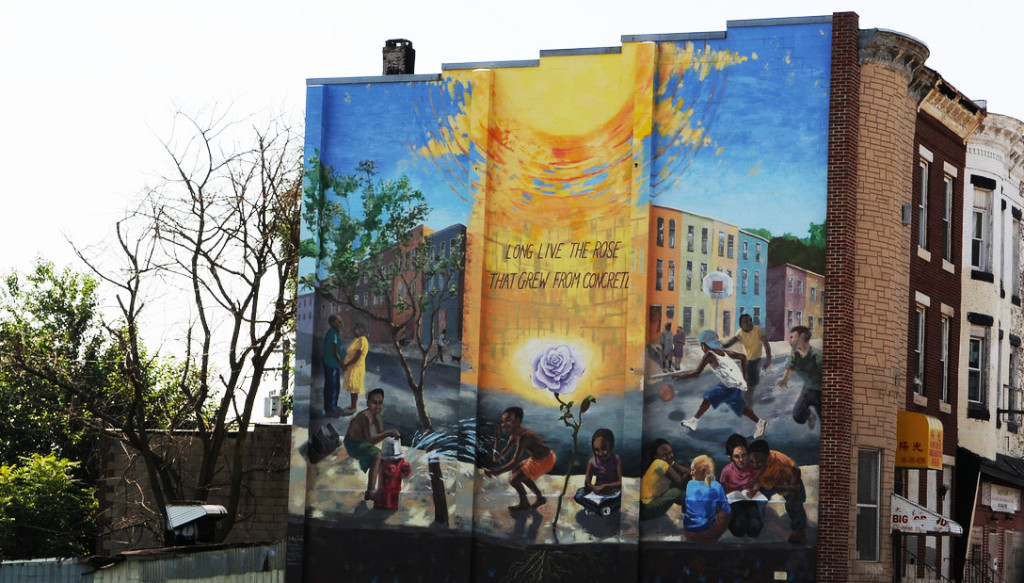by Kristen Minogue

Community mural in a Baltimore neighborhood. (BES-LTER)
Preserving the environment is often seen as a battle of development versus nature. But in America today, roughly three-fourths of us live in metropolitan areas. To preserve our health and the planet’s health, we need to create something new: A sustainable city.
Enter urban ecology. Plant ecologist Steward Pickett of the Cary Institute of Ecosystem Studies has been exploring the ecology of cities—hot spots where society, culture, economics and the environment collide—for more than two decades. In 1997, he and a handful of colleagues started the Baltimore Ecosystem Study, a long-term project that now involves more than 100 people. Pickett talks about some of their surprising discoveries in this edited Q&A. To learn more, you can meet him in person on Tuesday, Nov. 15, at the Smithsonian Environmental Research Center’s keynote evening lecture.
*Note: Edited for brevity and clarity

Steward Pickett (Xiaofang Hu)
How strange was the idea of “urban ecology” when you began?
It was sort of a marginal pursuit. Most ecologists in the United States preferred to think they were working in pristine areas, or at least in areas where the human hand was relatively light on the land… There was this deep, deep bias in ecology to not look at places where people were part of the system … Urban ecology is kind of a way to say, let’s recognize this and see what it’s doing.
You’re based out of New York. How did you end up starting the Baltimore Ecosystem Study?
We needed to interact with social scientists and people who really understood how humans were organized and how they made decisions and how all of that impacts the environment…
Morgan [Grove] and Bill [Burch] were working in Baltimore, and they said, why don’t you come down and see what we’re doing in Baltimore and how it works there, and maybe then we can have some more conversation? So I went with them to Baltimore, and a couple of things really, really hit me. One, this social environmental practice that Grove and Burch were involved in was really deeply embedded and connected with Baltimore communities, and environmental and community oriented agencies in Baltimore…The second thing was that there was a lot of opportunity for just taking basic ecological ideas and seeing how they would work in Baltimore. Driving around, walking around, going through neighborhoods, going through parks, walking around the stream, it became very clear that here was a place where you could very easily take familiar ideas in ecology and put them on the ground.
What’s been one of your most surprising findings?
The idea that urban riparian zones [streamside forests and marshes] do not clean up the nitrate pollution, do not reduce the nitrate pollution in the streams, which is what everyone expected with work in agricultural and rural settings. So the big lesson here is, don’t assume that the way something works in the countryside or in the rural areas is going to be the way it’s going to work in the city, even if the same types of “habitats” appear in both places.

Mural on a brick building in Baltimore. Contrary to conventional wisdom, having even a few trees in a neighborhood can cut crime. (BES-LTER)
What’s the link between trees and preventing crime?
The amount of tree canopy in different neighborhoods correlates with reductions in crime, and this includes things from robberies to gun crime. So the more trees you have, the more tree canopy you have in a neighborhood, the less crime. An increase of 10 percent tree cover I believe is associated with a decrease of about 12 percent in crime. What you hear when people talk about trees and crime, or vegetation and crime, there’s always the assumption that the more vegetation you have, the more trees you have, the more crime you will have, because it gives criminals a place to hide, or it gives them a place to hide contraband or things like that. So finding the opposite in Baltimore was a very noteworthy finding.
Learn More: Coffee, Carbon and Crime—22 Reasons to Love Trees
Your team also discovered poorer neighborhoods are up to twice as likely to have mosquitoes that can carry West Nile virus and other diseases. Why do you think that is?
A lot of these neighborhoods are susceptible to illegal dumping. And right off the bat, one should say the dumping is mostly being done by people who come from other neighborhoods. People don’t dump in their own neighborhoods. But trash provides containers where larvae can get going early on in the season…
Trash is one of the things that’s high on their lists of concerns. And usually people say, oh, that’s just about aesthetics. But here we have a mechanism that it really does relate to human well-being.

Community mural in a Baltimore neighborhood. The writing reads “Long live the rose that grew from concrete.”
(BES-LTER)
What can people who live in cities do to make them more sustainable?
There are things that individual folks can do, and these kinds of things have been improving local environment, working together, helping communities understand what the origin of local environmental threats is, what kinds of actions they can take. And the mosquito one is a really good one. Just cleaning up trash, just making sure there isn’t illegal dumping. Just making sure containers that accumulate water aren’t available.
How is Baltimore doing with sustainability?
They’ve really been working hard integrating this in the city activities, the city planning, the city budgeting, figuring out which kinds of activities are going to go forward year by year. That’s sustainability with real intent and real mechanism. It’s not just headline sustainability, just using a word so you can drop a headline and move on and keep on doing things the way you have been. So I’m really impressed with that.
Want to go deeper? Meet Steward Pickett at the SERC’s Keynote Robert Lee Forrest Lecture Tuesday, November 15. Lecture is free and open to all. No preregistration required.
“Twenty Years of Urban Ecology in the Baltimore Ecosystem Study”
Speaker: Steward Pickett, Cary Institute of Ecosystem Studies
Tuesday, November 15, 8p.m. (dessert reception at 7pm)
Smithsonian Environmental Research Center, Mathias Laboratory
Full details

